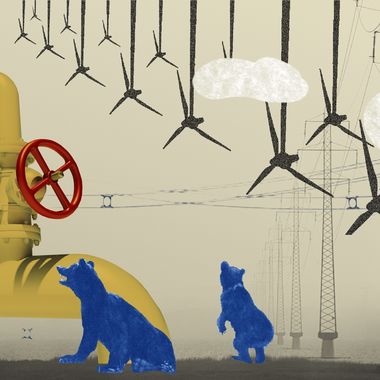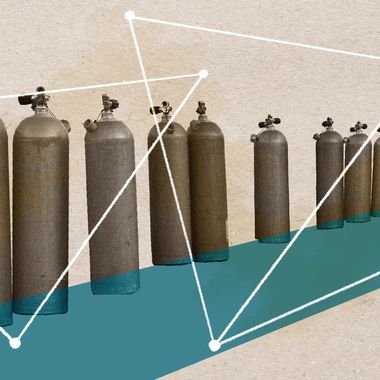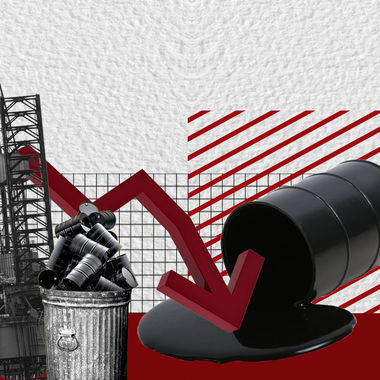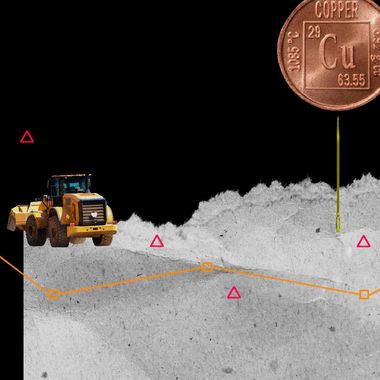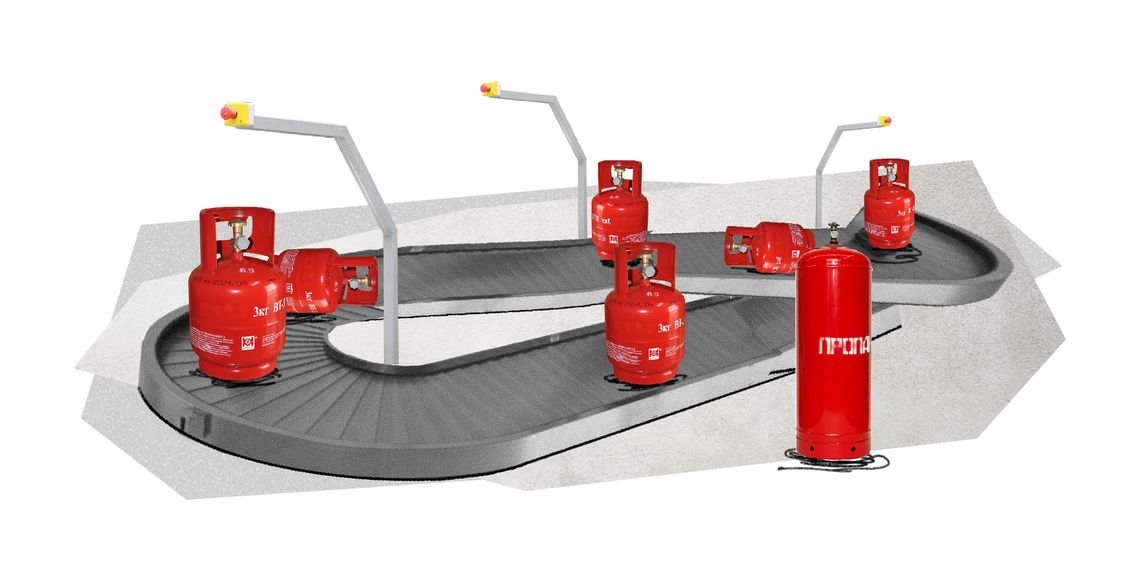
Illustration by Armine Shahbazyan.
The Treaty on the Eurasian Economic Union of May 29, 2014, (Articles 83 and 104) envisioned developing a common market concept for natural gas by January 1, 2016, including also preparation and approval of the plan for the development of the common gas market by the Supreme Eurasion Economic Council by January 1, 2018. The deadline for the implementation of the program is January 1, 2024.
Once this has taken place, an international agreement will be signed by the Eurasian Economic Union (EAEU) member states that will contain, among other provisions, common rules for access to natural gas transportation systems located throughout the EAEU member states (Russia, Belarus, Kazakhstan, Kyrgyzstan and Armenia). This document will enter into force on January 1, 2025.
In order to implement these processes, the Supreme Eurasian Economic Council on May 31, 2016, approved by Decision No. 7 the concept for establishing the EAEU common market for natural gas, which includes the goals, principles and tasks of establishing a natural gas market; the phases for market formation; the structure for selling natural gas; mechanisms for establishing tariffs for the service of transporting natural gas; attracting investments; technical regulations; and issues related to natural gas market monitoring and providing information.
Then, by Decision No. 18 of the Supreme Eurasian Economic Council of December 6, 2018, the program for establishing the EAEU common market for natural gas was adopted. According to this program, the establishment of the Union's common gas market is planned to be carried out in three phases.
The end of the 1st phase was planned for no later than January 1, 2021. The main result of this stage would be the creation of a methodological and organizational basis for the establishment of a common market.
The 2nd phase must be completed no later than January 1, 2022 and will result in the creation of the infrastructural, technological and legal bases of the common market.
The 3rd phase must be completed no later than January 1, 2025. The main result of the implementation of this phase would be preparing the gas market entities of the EAEU member states to participate in the common market for natural gas, including the creation of economic conditions for the market.
It should be noted that, during the meeting of the Supreme Eurasian Economic Council in December 2020, the leaders of the EAEU member states decided to move to the second phase of establishing the Union's common market for natural gas. At the same time, an agreement was reached on the completion of the measures of the first phase of establishing the common gas market, in particular, in reference to amendments on the document on uniform rules for access to natural gas transportation systems located in the member states’ territories.
The Eurasian Economic Commission has been instructed to discuss, together with EAEU member states, the issue of price and tariff formation for natural gas transportation services, which is envisaged to be included in the 2021 agreement.
As a result, in April 2021, the Eurasian Economic Commission submitted a draft agreement on the common market for natural gas to the EAEU member states in order to implement the necessary internal coordination procedures. It is planned to ratify the agreement in 2022.
As for the interest of the Republic of Armenia in the development of the EAEU common market for natural gas, it is important to look at the official statistics. In 2020, the Republic of Armenia imported natural gas with a customs value of $427.3 million, which is an increase of 2% over the previous year ($419.0 million in 2019). This total consisted of $364.4 million (85%) from Russia and $62.9 million (15%) from Iran. New natural gas tariffs for Armenian consumers came into force on July 19, 2020. They are as follows:
-
One cubic meter of natural gas costs 100 AMD ($0.20) for consumers entitled to family or social benefits (up to 600 cubic meters per year)
-
1000 cubic meters of natural gas costs $224 for greenhouse horticulture businesses and processing companies (canned food, beverages, dairy products, etc.)
-
One cubic meter of natural gas costs 139 AMD ($0.28) for consumers consuming up to 10,000 cubic meters per month (most of the general population)
-
1,000 cubic meters of natural gas costs $255.91 for consumers consuming 10,000 cubic meters or more per month (for example, cement production, car charging stations and other large consumers)
The data indicates that the price of natural gas in Armenia is incomparably high, which then impacts the price of electricity in the country. Rising energy prices have a chain reaction on increasing prices for goods and services in the economy, which in turn reduces the competitiveness of domestic products in both the EAEU and other markets.
Taking this into account, the formation of a EAEU common market for natural gas is of great importance for Armenia. It is, of course, difficult to expect rapid progress on this issue; however, efforts in this direction are necessary, taking into account Armenia’s interest as a natural gas importer. In addition, the cost of transporting natural gas is more significant to Armenia. Therefore, the share of the cost of transportation in the price of supplied natural gas must be acceptable.
There are two approaches to this, the first of which is based solely on market standards. The second, depending on the depth of political and geopolitical integration, provides for a certain bonus system in pricing mechanisms. In this regard, it is necessary to find a consensus version, and develop formulas that will satisfy both suppliers and consumers.
The creation of a common market for natural gas, of course, does not presuppose uniform gas prices, but it can be concluded that the latter must be harmonized, taking into account transaction costs, as well as transportation, taxes, transit costs, etc. In the long run, Armenia's participation in the EAEU common market for natural gas will condition the availability of affordable energy sources—first and foremost, natural gas—which will ensure growth potential and secure significant competitive advantages.
If the deal goes through, starting on January 1, 2025, the EAEU member states will be able to buy and sell gas from each other unobstructed and based on market principles.
Belarus, Armenia and Kyrgyzstan are very interested in having a common gas market within the EAEU. Russia and Kazakhstan are self-sufficient. Current rates for 1,000 cubic meters of natural gas from Russia are $127 for Belarus and $165 for Armenia. Gazprom also supplies Uzbek natural gas to Kyrgyzstan for $220. In essence, the main supplier of gas in the EAEU is Russia’s Gazprom company.
It should be clearly emphasized that the issue of a common gas tariff is not being discussed at present. The discussion is exclusively about the development of general principles and methodology for pricing gas transit tariffs, especially since the program clearly mentions the issue of infrastructural restrictions, which mostly refers to the Republic of Armenia. The gas pipeline infrastructure of Armenia is connected with the EAEU infrastructure through Georgia, and this transit component cannot be ignored during pricing. The transit fee for Russian gas through Georgia is 10%, which of course raises the price of gas supplied to Armenia.
If, at some point, Russian gas gets imported to Armenia in accordance with Russian domestic prices, it would be very beneficial for the Republic of Armenia. As a result, international prices in the Eurasian Economic Union will be mediated, i.e. fluctuations in the above-mentioned prices will not have a direct impact on domestic pricing.
Also see
Laying Off the Gas: Energy Security in Armenia
By Yelena Vardanyan
Diversifying Armenia’s energy sources is a strategic need of national importance. The coming decade presents an opportunity to turn direction and tackle the considerable obstacles facing the country. Strong political commitments and a focused approach are needed to make real progress.
Southern Gas Corridor Brings Azerbaijani Gas to the EU
By Anna Barseghyan
The operation of the Southern Gas Corridor raises the geopolitical significance of Azerbaijan and Turkey, contributing to the further isolation of Armenia from regional projects. The EU seems to limit its concern about human rights violations and war crimes in Artsakh to mere lip service.
Armenia in a Post-Oil Era
By Régis Robert Danielian
The nature of the strategic importance of oil and gas is changing. As energy policies adapt, Armenia will face a new global reality. Will it be ready for it?
By the same author
Armenia’s Obstacles Within the Eurasian Economic Union
By Suren Parsyan
There are a number of obstacles and barriers within the internal market of the EAEU. If solved quickly and effectively, it can create opportunities for mutual trade to grow, making it a productive vehicle for regional integration.
Armenia's Economy Is Dependent on the Mining Industry
By Suren Parsyan
A new tax hike on copper concentrate, molybdenum concentrate and ferromolybdenum places a burden on a sector that is critical to Armenia’s balance of payments and was implemented with an unwelcome urgency reducing regulatory certainty for potential investors.


